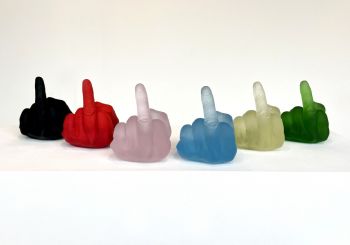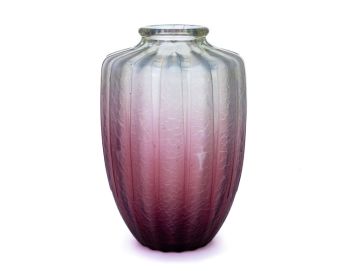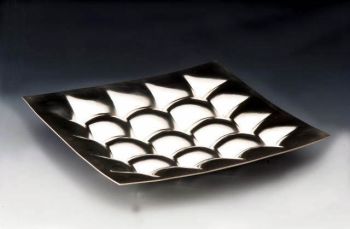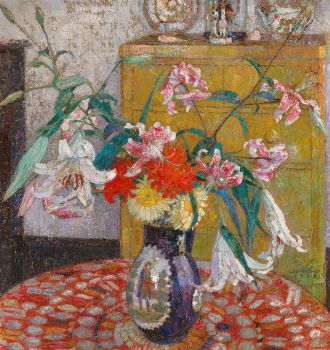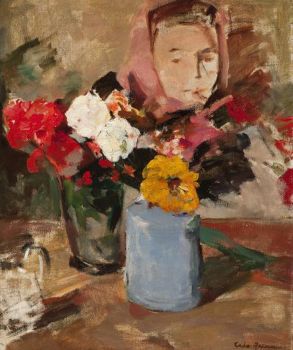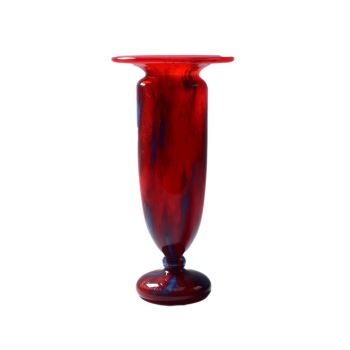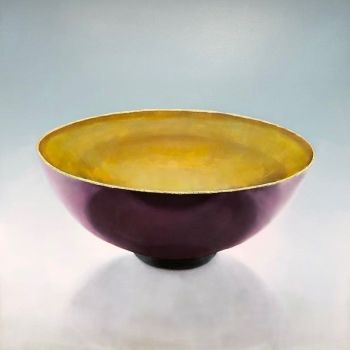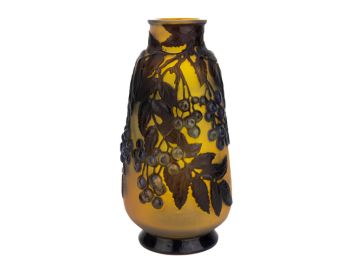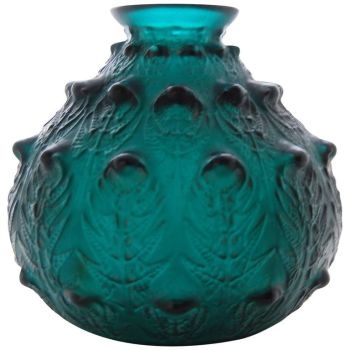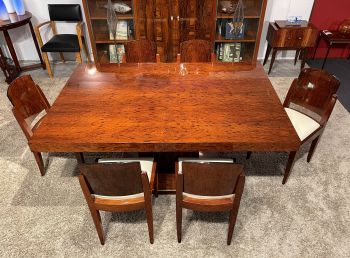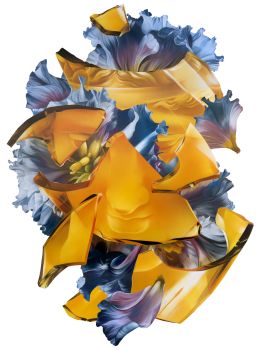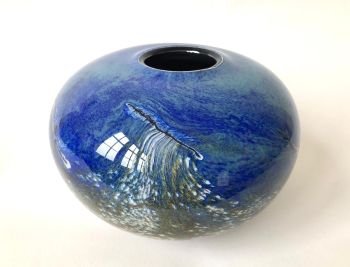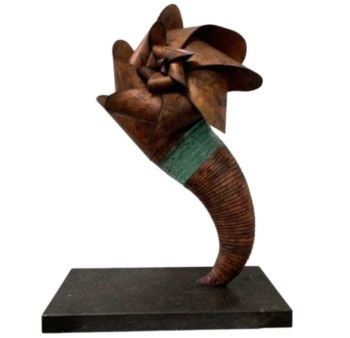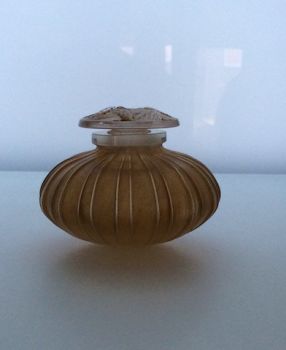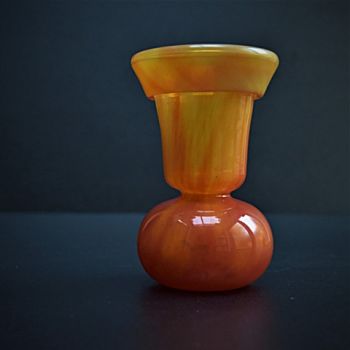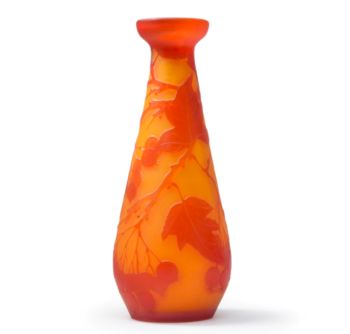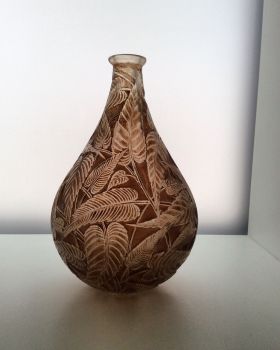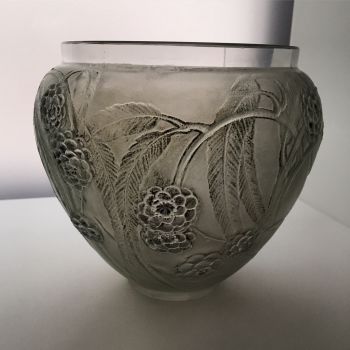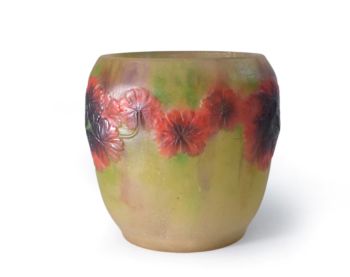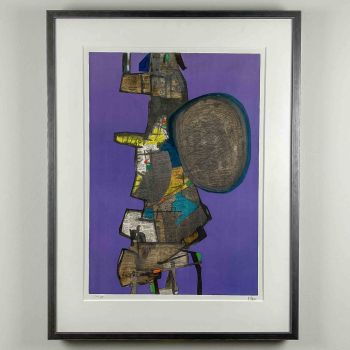A blue and clear glass Art-Object “Lansetti” (Lancet), Model KF219 – Nuutajärvi-Notsjö, Finland 1957 1957
Kaj Franck
Glass
3 ⨯ 32 ⨯ 9 cm
ConditionVery good
€ 1.650
Van Kerkhoff Art
- About the artworkA free blown and cut and polished blue and clear cased artglass object “Lansetti” (Lancet), model KF219. Designed by Kaj Franck in 1954, it was skillfully brought to life by the artisans of the Nuutajärvi-Notsjö glassworks in 1957.
These coveted objects, produced between 1954 and 1961 in two different sizes and several colour combinations. This particular example is an early smaller sized “Lancet”, featuring a delicate interplay of blue and clear glass. It is worth mentioning that Franck also designed a more curved variant of the “Lancet,” known as model KF218, which is a better-known model.
This artglass object, a testament to its age, bears the gentle marks of its vintage journey. In good condition, it retains its inherent charm. The base proudly carries the fully signed and dated inscription: K. Franck Nuutajärvi-Notsjö ’57.
About Kaj Franck
Kaj Franck (Vyborg, Finland 1911 – Santorini, Greece 1989), a pioneering Finnish designer and a prominent figure in the Finnish art world from 1940 to 1980, left an indelible mark on the design landscape. Today, his name is synonymous with excellence and innovation, as exemplified by the prestigious “The Kaj Franck Design Prize,” which is annually awarded by the esteemed Finnish Design Forum.
Born in 1911 on the Finnish-Russian border into a family with a rich architectural heritage, Franck had design in his blood. His grandfather held a prominent position as the director of the renowned Arabia Ceramics factory, underscoring the influence and inspiration that surrounded him from an early age.
Franck pursued his passion for design by studying at the furniture department of Taideteollinen korkeakoulu, known today as the Aalto University School of Arts, Design, and Architecture, in Helsinki. Equipped with a solid foundation in design principles, he embarked on a career as a freelance designer before joining Arabia in 1945. It was during his time at Arabia that Franck’s talent truly flourished, and in 1950, he assumed the role of the company’s Artistic Director.
While his contributions to Arabia were significant, Franck’s creative vision extended beyond ceramics. He also designed glass objects for Iittala between 1946 and 1950, and later for Nuutajärvi-Notsjö glassworks from 1950 to 1976. His designs, particularly in everyday tableware and glassware, propelled him to the forefront of the design world. Notably, his iconic Kilta tableware and Kartio glassware are celebrated as revolutionary and enduring symbols of classic Finnish design.
Franck’s design philosophy embodied a profound commitment to principles of moderation, ecology, and equality. Often referred to as “the conscience of Finnish design,” he advocated for minimalism and the conscious reduction of everyday objects, emphasizing the importance of sustainability and product life cycles. Franck’s designs were a testament to his belief that beauty and functionality could coexist harmoniously, enhancing the lives of individuals while respecting the environment.
Recognized for his exceptional contributions, Franck’s works grace the collections of esteemed museums worldwide. Noteworthy institutions such as the Design Museum Helsinki, the Museum of Modern Art in New York, the Stedelijk Museum Amsterdam, and The British Museum in London all proudly display his creations. Throughout his illustrious career, Franck received numerous accolades, including the prestigious Lunning Prize in 1955, as well as “Grand Prix” and multiple “Gold Medals” at the renowned Triennale di Milano.
Kaj Franck’s enduring legacy rests not only on his remarkable designs but also on his unwavering commitment to advancing the field of design. His vision, which emphasized sustainability, simplicity, and social consciousness, continues to inspire designers and enthusiasts alike, ensuring that his influence will be felt for generations to come.
Marked
signed underneath the base in diamondpen: K. Franck Nuutajärvi-Notsjö ’57 (1957)
Condition
This art-object is in good vintage condition, some minor scratches and wear consistent with age and use. No chips or cracks.
Literature
Marianne Aav (ed.), Kaj Franck, Universal Forms, p.323
Dimensions
Height 3,5 cm
Width 32,6 cm
Depth 9,6 cm
Weight 837 grams - About the artist
Finnish ceramic and glass designer Kaj Franck (1911-1989) realized a powerful truth in his distinguished career: simple is beautiful. Despite the world moving at an ever-fastening pace, from one decade to another, that simple truth remains. Franck’s inspiration and principles began a tradition in Finnish design, which is still alive and strong today. His best-known works are Iittala Teema and Kartio series, and his heritage is a part of every Finnish home.
"I want to make use of objects that are so obvious that they are not noticeable”, Kaj Franck defined his own work. His designs catered to basic human needs while serving them tools with properties of everyday objects. Franck was also interested in low-cost mass production and shunned materialism, throwaway culture and showing off. Franck’s world consisted of the basic mathematical shapes and simple forms, decorated only with strong colours.
The starting point of Franck's work was practicality combined with beauty. Although it seems self-evident today, in his own time his thoughts were radical. Franck separated styles and fashion trends from tradition and gave it a whole new meaning. In the period of 1952-53, Franck showed that dinnerware does not need to be overly complex with the release of the Kilta series as strong statement – it was a novel idea that everyone was able to do table settings according to their own needs.
Franck began his designs by focusing on the idea or underlying concept, not the shape. This emphasis on the idea aspect of design was also carried to his work as a teacher and later as an artistic director at the University of Art and Design in Helsinki. Franck was also one of the first advocates of recycling, and he has often been called the "conscience of Finnish design”. Franck won many awards in his distinguished career and became internationally famous. Today, the Kaj Franck Award is Finland's most prestigious design recognition.
Are you interested in buying this artwork?
Artwork details
Related artworks
- 1 - 4 / 10
Børge Mogensen
Teak wood “dropleaf” desk – Søborg Møbler, Denmark circa 19551950 - 1960
Price on requestVan Kerkhoff Art
1 - 4 / 24Unknown artist
François-Théodore Legras – Tall “Fleurs de Pommier” apple blossoms vase1900 - 1909
Price on requestAntiques Emporium
Gabriel Argy-Rousseau
Gabriël Argy-Rousseau – Crabes et Algues vase – 19201920 - 1929
Price on requestAntiques Emporium
Johann Loetz (Lötz) Witwe Klostermühle
Johann Loetz Witwe - Phänomen Genre 7773 – Orange1900 - 1910
Price on requestAntiques Emporium
1 - 4 / 24René Lalique
A very rare deep green ‘Fougeres’ Vase designed by R. Lalique1912
€ 8.950Lennart Booij Fine Art and Rare Items
 Curated by
Curated bySilla Scheepens
Unknown artist
Japanese art deco lacquervase with Scarab beetle motif1920 - 1950
Price on requestDille Art
1 - 4 / 24Unknown artist
Cristallo façon de Venise Drinking Glass1600 - 1650
Price on requestPeter Korf de Gidts - Antiquairs
Gabriel Argy-Rousseau
Gabriël Argy-Rousseau – Crabes et Algues vase – 19201920 - 1929
Price on requestAntiques Emporium
1 - 4 / 24- 1 - 4 / 12













































